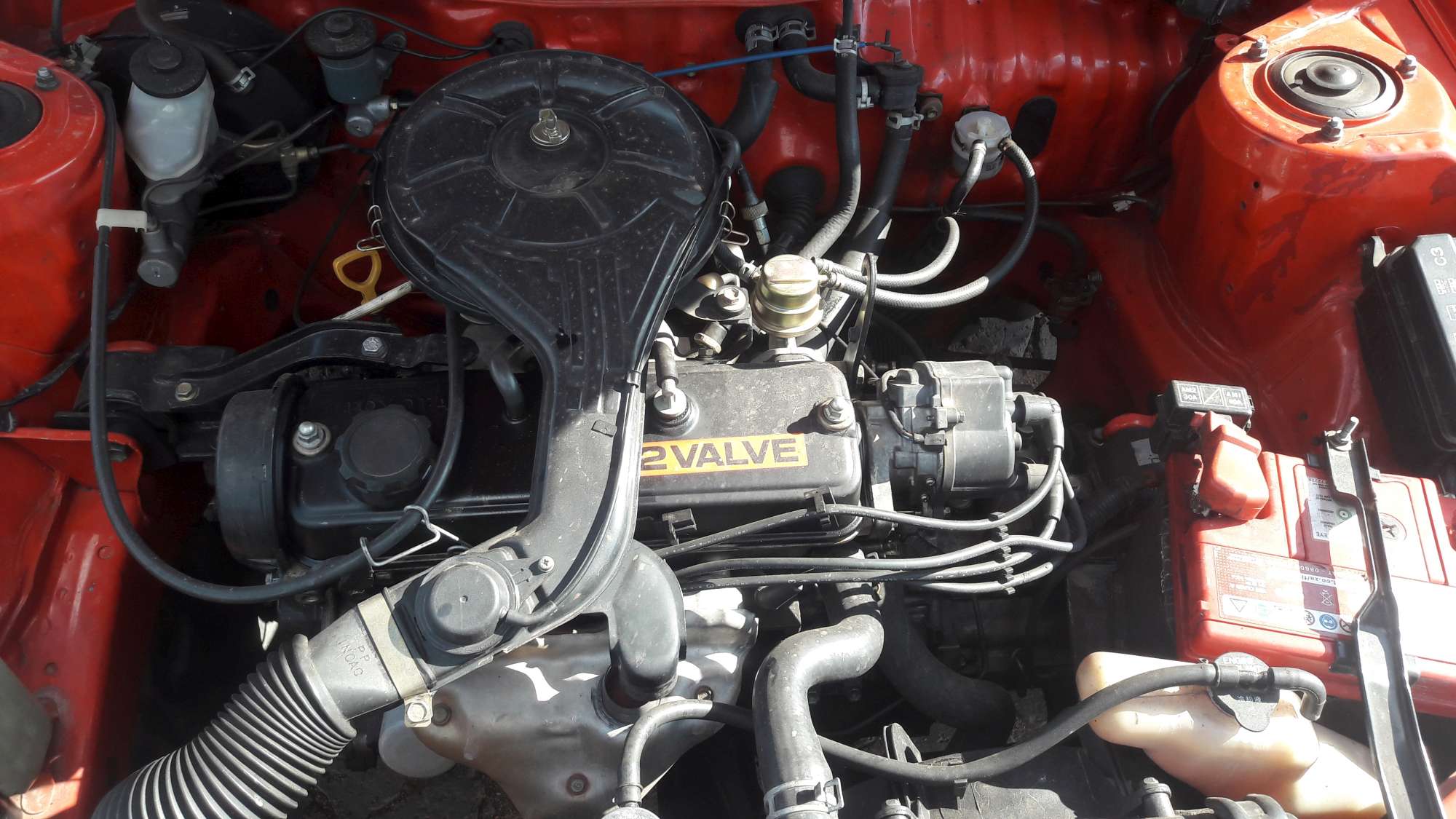Toyota Tazz: Exploring Its Legacy and Continued Appeal Among Drivers
Check Out the most recent Patterns in Engine Modern Technology Via Tazz
In the quickly progressing landscape of vehicle modern technology, Tazz stands at the leading edge, highlighting substantial developments in engine systems that focus on both innovation and sustainability. From hybrid engines that maximize fuel performance to the emergence of hydrogen gas cells, the fads shaping contemporary powertrains are not just enhancing performance yet also resolving vital ecological difficulties.
Hybrid Engine Innovations
Crossbreed engine innovations stand for an essential shift in vehicle technology, integrating the benefits of interior combustion engines with electrical propulsion systems. This assimilation not only improves gas effectiveness however likewise minimizes exhausts, conference significantly stringent ecological policies. By using both power sources, hybrid engines can maximize efficiency, delivering power when required while conserving fuel throughout less requiring driving problems.
Recent innovations in crossbreed technology consist of enhancements in battery performance and regenerative braking systems. These technologies enable greater power healing during slowdown, which can be rerouted to help in acceleration or power accessory systems. Additionally, manufacturers are concentrating on compact layouts and lightweight materials to make best use of the efficiency of hybrid powertrains.
The advancement of plug-in crossbreeds has additionally broadened the marketplace, making it possible for chauffeurs to bill their vehicles making use of standard electric outlets. This function commonly enables substantial all-electric range, further decreasing dependence on standard gas. tazz. As the vehicle industry proceeds to advance, hybrid engine innovations are anticipated to play a crucial role in connecting the space between conventional cars and fully electric models, providing a transitional solution that caters to varied customer requirements and preferences
Advances in Electric Powertrains
The automobile landscape is rapidly developing, with electric powertrains becoming a leading pressure in lasting transportation. Advances in electrical lorry (EV) modern technology are substantially boosting efficiency, efficiency, and user experience. Key technologies consist of enhancements in battery chemistry, which have raised power thickness, decreased billing times, and expanded general battery life.
Solid-state batteries, for instance, assure to transform the market by supplying greater safety and security and effectiveness contrasted to conventional lithium-ion cells. Developments in regenerative braking systems are allowing cars to recover power throughout deceleration, contributing to total effectiveness.
Along with battery technology, electrical motor designs are ending up being extra innovative. Developments such as integrated motors and progressed thermal management systems are helping to optimize power delivery and minimize weight, ultimately boosting vehicle dynamics.

Collectively, these advances underscore the dedication to change in the direction of cleaner, extra reliable transport options, placing electric powertrains at the forefront of automobile development.
The Rise of Hydrogen Gas Cells
Significantly, hydrogen gas cells are getting traction as a practical alternative to traditional inner burning engines and battery electric cars. This technology uses the chemical power kept in hydrogen, converting it into electrical power through an electrochemical response with oxygen. The key byproduct of this process is water, making hydrogen fuel cells an eco-friendly choice with absolutely no discharges at the tailpipe.

Automakers are significantly purchasing hydrogen gas cell technology, acknowledging its capacity for long-range applications and quick refueling capacities that match traditional gas. Additionally, industries such as durable transportation and public transportation are particularly well-suited for hydrogen fuel cells, where battery electric remedies may fail as a result of weight and array limitations.
As research study and financial investment remain to broaden, hydrogen gas cells are positioned to play a significant role in the future landscape of clean transportation and energy services.
Enhancements in Internal Combustion Engines
Advancements in inner burning engine (ICE) innovation are transforming standard automobiles to satisfy contemporary environmental requirements and performance expectations. One of one of the most substantial improvements includes the combination of sophisticated fuel injection systems. These systems maximize the air-fuel combination, boosting burning effectiveness and leading to reduced emissions. Straight gas injection, as an example, permits better atomization of gas, causing more complete burning and boosted power outcome.
Additionally, turbocharging has article source actually acquired prestige, enabling smaller engines to provide higher efficiency without the weight of larger engines - tazz. This modern technology not only enhances effectiveness yet likewise adds to decrease fuel intake. Variable valve timing systems are additionally being refined, click resources making it possible for engines to adapt to numerous driving conditions for enhanced torque and responsiveness
Furthermore, making use of lightweight products in engine construction is ending up being basic, more enhancing gas performance by decreasing total car weight. Engine control systems (ECUs) are increasingly advanced, making it possible for real-time adjustments that maximize performance and exhausts.
These enhancements jointly signify an essential change in ICE technology, lining up with international sustainability goals while still supplying the efficiency drivers expect from their automobiles. As the sector evolves, these enhancements remain to form the future of traditional automobile engineering.
Future Patterns in Engine Performance
Substantial developments in engine effectiveness are expected as suppliers concentrate on integrating advanced innovations to satisfy rigorous ecological laws and customer needs. The change in the direction of electrification, crossbreed systems, and alternative gas is reshaping the automotive landscape, driving advancements that enhance fuel economy and decrease emissions.
One of the essential trends is the implementation of innovative materials and producing methods. High-strength alloys and light-weight composites add to lowered lorry weight, hence enhancing total performance. Additionally, the adoption of turbocharging and variable helpful hints shutoff timing technologies allows for enhanced power output from smaller engines, further improving fuel economy.

Final Thought
In conclusion, the exploration of engine modern technology exposes significant innovations that prioritize sustainability and performance. Developments in crossbreed engine systems, electric powertrains, and hydrogen gas cells demonstrate a commitment to lowering discharges while boosting efficiency. Additionally, renovations in internal combustion engines and an emphasis on lightweight products add to overall engine effectiveness. As the automotive market remains to evolve, these patterns will certainly play a crucial function fit a cleaner and even more sustainable future for transportation.
From crossbreed engines that maximize gas efficiency to the emergence of hydrogen fuel cells, the patterns forming modern-day powertrains are not just boosting efficiency yet also addressing vital environmental difficulties.Hybrid engine advancements stand for an essential change in vehicle modern technology, incorporating the benefits of inner combustion engines with electrical propulsion systems.Additionally, turbocharging has actually obtained prestige, permitting smaller sized engines to provide greater performance without the weight of larger engines. Additionally, the fostering of turbocharging and variable shutoff timing modern technologies enables for boosted power result from smaller engines, even more enhancing gas economic situation.
Enhancements in interior combustion engines and an emphasis on light-weight materials contribute to total engine performance.